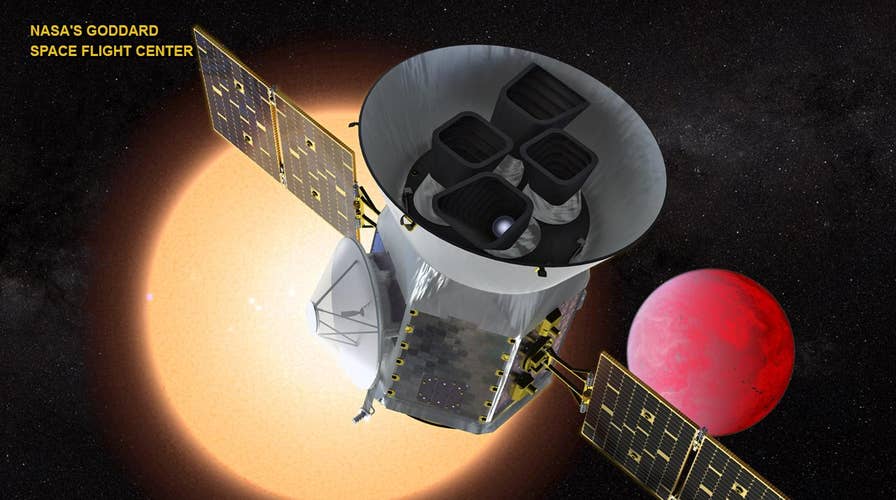NASA's new planet hunter just found its first alien world
According to a new study, NASA's new Transiting Exoplanet Survey Satellite has detected its first alien world, a 'super-Earth' that is likely evaporating under the heat from its star.
In the search for alien life, researchers have discovered an "intriguing" radio signal emanating from the star system closest to the sun, according to a media report.
The Guardian reports that researchers at the Breakthrough Listen project, which is "the largest ever scientific research program aimed at finding evidence of civilizations beyond Earth," have discovered a 980 MHz signal that appears to emanate from the Proxima Centauri star system, slightly more than four light-years from Earth.
One of the researchers behind the project, Andrew Siemion from the University of California, Berkeley, was hard-pressed to describe the source of the signal.

A rocky planet orbiting Proxima Centauri might sustain liquid water (artist’s depiction). (Credit: NASA, ESA, G. Bacon (STSc))
"It has some particular properties that caused it to pass many of our checks, and we cannot yet explain it," Siemion told Scientific American of the 980 MHz signal.
Fox News has reached out to NASA with a request for comment.
"We don’t know of any natural way to compress electromagnetic energy into a single bin in frequency" Siemion added, noting there could be some natural explanations behind it. But "for the moment, the only source that we know of is technological."
Proxima Centauri b is the closest confirmed exoplanet to Earth, at 4.2 light-years away. In January, researchers discovered the presence of a possible second exoplanet, a "Super-Earth," also orbiting Proxima Centauri.
Though the news has not been published in scientific journals, one individual in the astronomy community told The Guardian the signal is "the first serious candidate since the ‘Wow! signal’."
The "Wow! signal," discovered in 1977, was "a very strong, unexpected signal" discovered by a large radio telescope known as the Big Ear, NASA notes. It was only heard once and in 1998, the Big Ear was torn down.
PRESENCE OF 'ONE OF THE MOST INTERESTING PLANETS' PROXIMA B CONFIRMED
This new signal has been given the name BLC1, for Breakthrough Listen. It was initially discovered in April 2019 by the Parkes 210-foot radio telescope in Sydney, Australia.
The Breakthrough Listen project, which collaborates with NASA's Transiting Exoplanet Survey Satellite in the search for extraterrestrial intelligence (SETI), detects radio signals in space constantly. It often finds technological devices such as spacecraft, satellites, GPS systems or other celestial instances, such as those from the sun or those emanating from beyond the solar system.
Nonetheless, the $100 million project, funded by Israeli-Russian entrepreneur Yuri Milner, sees the importance in this signal given that it seems to emanate straight from Proxima Centauri and the fact that it "drifts," changing ever so slightly in frequency, has intrigued researchers nonetheless.
"We would expect the signal to be going down in frequency like a trombone," Penn State University researcher Sofia Sheikh told Scientific American. "What we see instead is like a slide whistle – the frequency goes up."
Seth Shostak, a senior astronomer at the SETI Institute, said it's possible the signal is not coming from Proxima Centauri, but perhaps beyond it and it just so happens to line up with the star system, an interesting discovery, nonetheless, among other possible explanations.
"Yes, as long as we still don’t know, we should continue to consider the alien hypothesis viable," Shostak wrote in a blog post. "After all, any SETI detection is going to be dicey when we first make it … there will be plenty of calls for restraint intended to pacify the all-too-eager. But it’s reasonable to expect that someday one of these suspicious signals will, indeed, be the sought-after proof of intelligence on another world."
CLICK HERE TO GET THE FOX NEWS APP
More than 4,500 exoplanets have been discovered so far, with only a small portion thought to have the properties to contain life.
A study published in November suggested the galaxy may actually contain 300 million planets capable of supporting life.





















